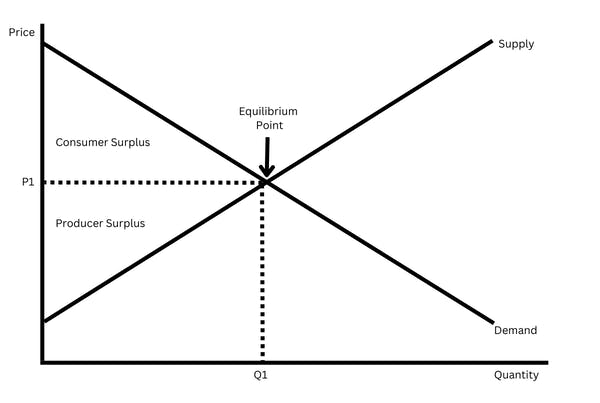Some ethical issues are extremely easy to understand: don’t steal, treat others with respect, and always put down the toilet seat for your lady friends. However, when it comes to the market, the concept of what is right and wrong is a bit blurrier. Of course you can’t exploit children for a labor force, but Is it a business’s right to price however they want? After all, if the number is too high or the marketing too egregious, then consumers won’t buy right?
Well, not exactly. Over the years, governments have put laws on the books for the most heinous of fraudulent pricing strategies, but even then some tactics are considered quite unethical, and you may be committing these missteps without even knowing. We touched a bit on the ethics of natural disaster price optimization in a previous post, but in order to fully understand the scopes of pricing ethics let’s take a look at a brief overview before diving into five main concepts you should stay far away from in your business.
Pricing a product ethically is a major decision for any business. Businesses who use ethical pricing strategies to sell their products and earn a profit are far more respected than those that hurt and defraud competitors or even consumers. To practice ethical pricing, you need to be able to spot the ethical issues that hinder fair pricing.
What is an ethical pricing strategy?
An ethical pricing strategy goes beyond simply following the law. Similarly, not all unethical pricing strategies are fraudulent or illegal. Ethical decisions are difficult sometimes because there isn’t a defined line for morally right and wrong decisions. As with many ethical problems in business, we need to take a step back, and view our decisions as a greater part of the business community, and set ethical standards for ourselves.
There is a general consensus that marketing strategies must not infringe on values like honesty, transparency, and autonomy. As such, the main crux of pricing ethics concerns the establishment of a balance of power (through information) between the producer and the consumer. In a completely free market, producers often have the upper hand because they are in control of their products and processes. This potentially lead to unethical practices (using cheap or harmful materials, lying about benefits, etc.), which are deemed harmful for society as a whole.

Interestingly enough though, even with this possibility only a handful of pricing practices are regulated by the government, mainly because you’re not really sure someone had broken a pricing law until you see results. For example, while predatory pricing, aka pricing extremely low to drive competitors out the market, is illegal, it’s difficult to prove that the price decreases had such an intention and were not simply the result of competitor based pricing. It’s like telling a child that he can have a cookie only if he finishes his vegetables, but with no way to discern if the kid ate the peas or if they were slipped to the dog. Essentially, most laws blindly attempt to curb motivations for doing things, rather than results.
Examples of Unethical Pricing Strategies
As a result, pricing ethics and legality sit in a grey area, constantly ebbing and flowing between ethical and unethical. To better protect you and your business, here are some of the most common pricing practices that sit on a razor’s edge of ethics and legality.
Having ethical pricing practices doesn't have to be difficult, but sometimes it can be confusing. Here are the 5 ethical pricing issues that hurt business the most:
1. Price fixing: Collusion at its worse
What is price fixing?
Price fixing involves an agreement between a group of people on the same side of a market to buy or sell a good or service at a fixed price. Typically, competition between these participants for consumers drives down prices for goods and services.
Price fixing example
Yet, imagine a world where every ice cream shop in America vowed that all single scoops were now $15. Consumers would lose out, because we’d find alternatives or shell out an exorbitant amount of cash, as we couldn’t go to another neighborhood joint to battle the high prices/low quality offering of another.
Horizontal price fixing is illegal
The potential blow to consumers is why horizontal price fixing is illegal, which means corporations on the same level of the supply chain cannot agree on a target, maximum, or minimum price (among other things). This form of fraud can be prosecuted under the Sherman Anti-Trust Act.
Vertical price fixing
The Supreme Court did rule, however, that vertical price fixing is allowed. For example, wholesale companies can limit how much retailers charge for clothes.
The bottom line: Look at your competitors to understand the market, but don’t get in a room with them and try to take advantage of consumers. Check out more about competitor based pricing.
2. Bid rigging: Favoritism
What is bid rigging?
This one’s more for the proposal crows, but bid rigging involves promising a commercial contract to one group, even though you make it look like multiple parties had the opportunity to submit a bid. Not only is this a moral no no, but it’s also one of the few the government follows up on, especially within their own ranks, because of the number of bids and contracts the government deals with on a yearly bases. This practice hurts consumers considerably, because the best producer doesn’t receive the work necessarily.
Is bid rigging illegal?
There are many variations of this offense, and all include some predetermined agreements between corporations involved in securing a contract. Considered a form of collusion, big rigging is illegal under the Sherman Act, our government's rockstar market regulator.
The bottom line: Even if “you know a guy” keep the bidding process honest on both sides. Everyone will end up better off.
3. Price discrimination: Anti-favoritism
What is price discrimination?
Price discrimination is the strategy of selling the same product at different prices to different groups of consumers, usually based on the maximum they are willing to pay. The practice also surfaces in hiding lower priced items from customers who have a higher willingness to pay. This one is a little tricky, because it is socially accepted in some cases, yet rejected in others.
Price discrimination examples
For example, very few people would complain that the 80 year old man and his 2 year old great-granddaughter pay $10 less to enter the carnival. Yet, only showing the more expensive hotels to more affluent customers caused an enormous amount of PR backlash for travel site Orbitz.
Clearly, there are a lot of different manifestations of price discrimination. Legally, the main law on the books, the Robinson-Patman Act of 1936, is exceptionally outdated and has more holes than my favorite swiss cheese.
The bottom line: Charge different types of customers differently through product differentiation, bundling, and the like, but be exceptionally careful about communicating differences in price. Sometimes a PR backlash can hurt much more than a legal one. Check out more on communicating price changes (article is a bit tangential, but educational).
4. Price skimming: Discriminating through time
Once again, another shady area. Price skimming is when the price for a product is first sold at a very high price and then gradually lowered. The goal here is pretty obvious, producers want to capture each step on the demand curve; consumers who are willing to pay more buy the product first, and then a new groups’ purchases are triggered with each decrease in price.
This strategy is most commonly seen in the tech industry, as some consumers are willing to pay a premium price for the newest gadgets. Apple is a prime example, as prices drop within months of a release and new iterations happen within six to 12 months. Like price discrimination, this practice isn’t illegal, but if too obvious and not tested enough, it can trigger an unfortunate PR backlash. Apple received a lot of flack for cutting their production cycle on the latest iPad, instantly lowering the prices of the older models.
The bottom line: Find ways to lower prices to new tranches of customers discreetly. Coupons, promotions, and lightweight versions of a product are all exceptionally effective while keeping the same number on the page. Check out more on how Apple crushed the latest iPhone price optimization.
5. Supra competitive pricing: Monopoly gouging
Sometimes the value that consumers place on a good is much greater than the cost of producing that good. In such cases, there is controversy about whether the corporation is justified in charging a much higher price and matches the perceived value. This situation can take place during a shortage, such as the price of food or fresh water after a hurricane, or when a certain product is the only one of its kind available. Pharmaceuticals and the patents that surround them are a great example.
Producers in these instances can charge an exorbitant amount of money, but should they? I think we’d agree that setting skyrocketing prices for food or generators following a hurricane is wrong (and some states have laws against it), but most software costs are relatively cheap compared to the value provided to a customer. Very different contexts, but more generally, some consider taking advantage of consumers' needs unethical, while others feel like it's an inevitable result of a free market and a just reward for innovation.
The bottom line: This is a common sense scenario, but a good litmus is to ask yourself if the pricing change hinders an individuals’ necessities. Software products are phenomenal for improving efficiency, but if the Internet blew up tomorrow, we’d still need food and water.
Don’t do anything illegal when setting or changing your prices, but even with the questionable practices, always step back and think about what the price looks like from a customer’s perspective. You’re not building a quick sale business. You’re building something sustainable, so make sure to avoid any and all pricing PR disasters.



